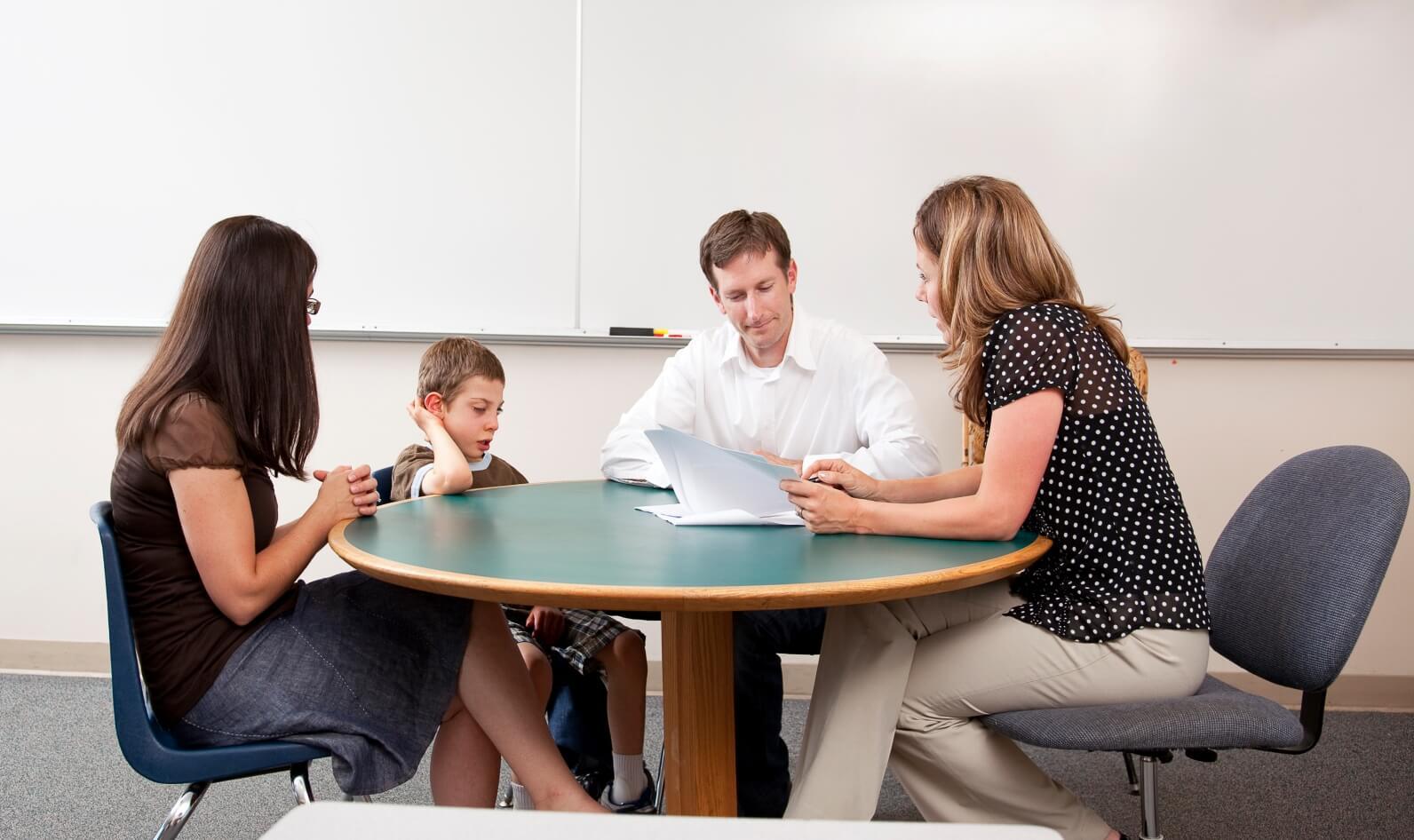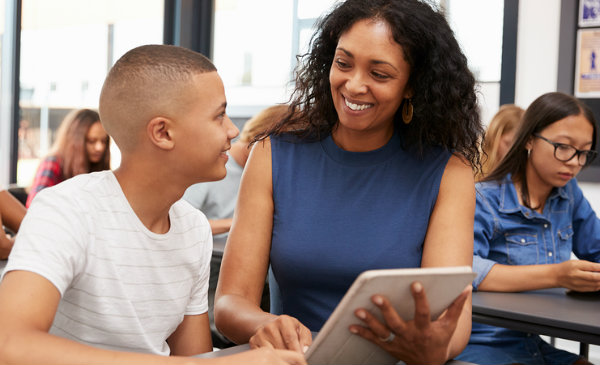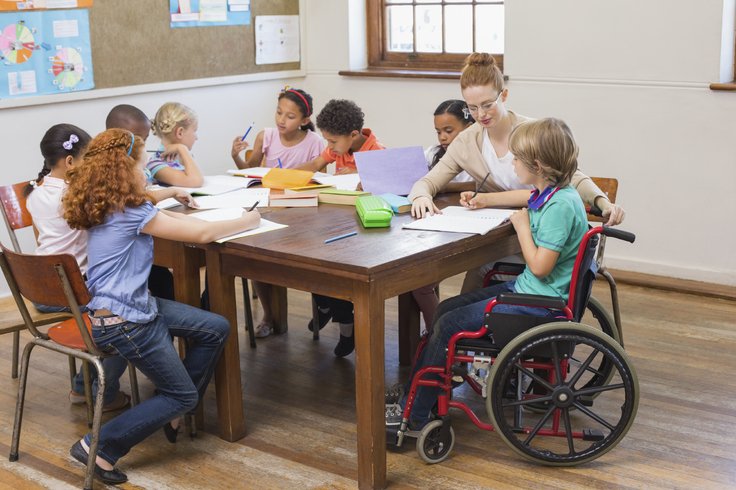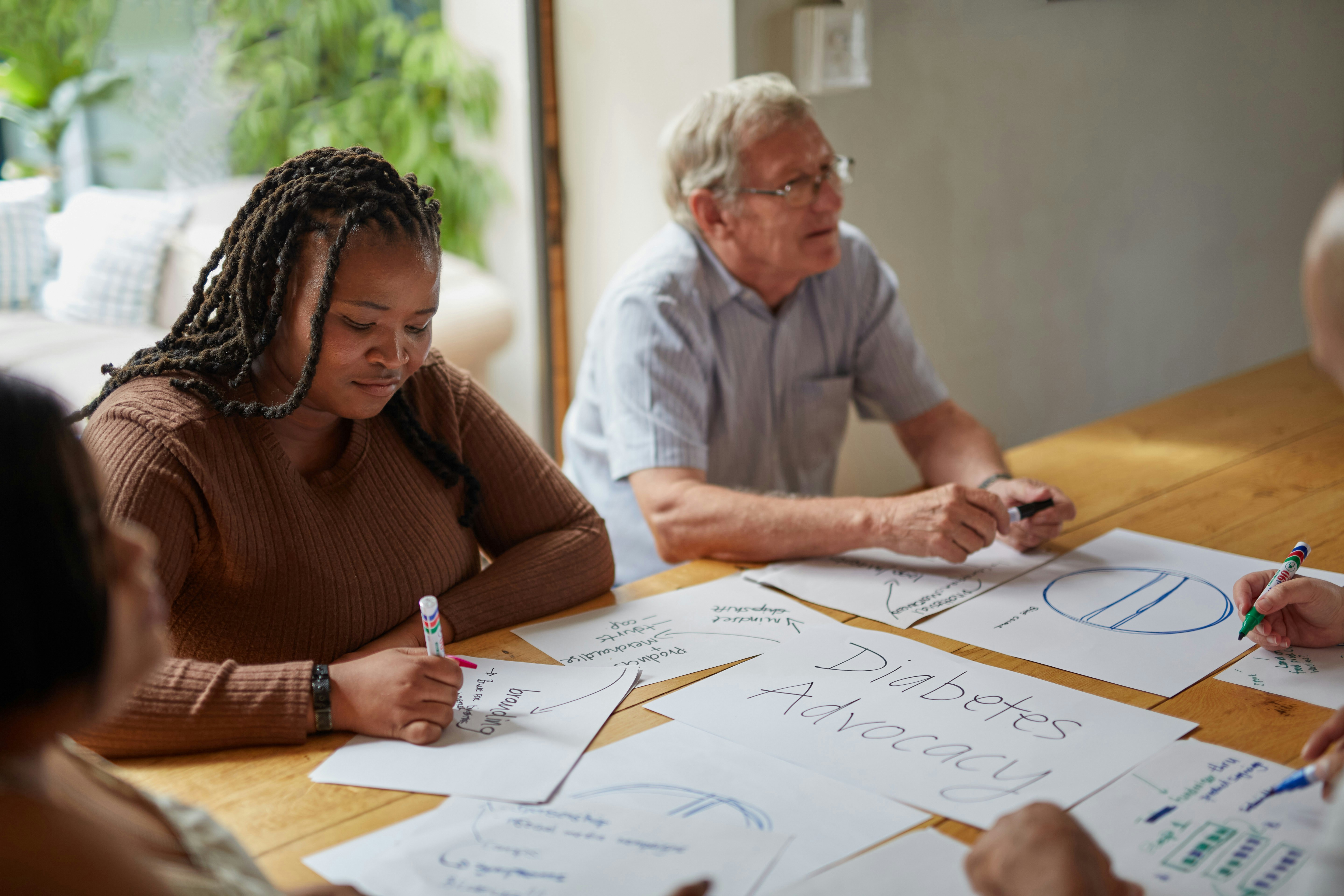
With more than 7 million disabled students in the U.S. embracing inclusive education has become an imperative for all academic institutions in the present day. Despite numerous years of committed efforts to advance disability rights, students who are Deaf, hard-of-hearing, or disabled continue to face obstacles that hinder their pursuit of an equitable and accessible education.
As a new school year commences, it is the duty of administrations to ensure that classrooms are both inclusive and accessible to foster the academic, social and emotional growth of every student. Educators who acknowledge the diverse needs of students with different abilities are instrumental in advancing a more equitable educational system. Students with disabilities depend on teachers to speak up and advocate for accommodations, assistive tools and resources necessary for learning.
The following teacher's guide provides educators with tips to recognize disabilities and strategies to implement inclusive methodologies in the classroom, so that every student has equal access to achieving academic success.

Spotting Signs of a Disability
Cultivating an inclusive classroom begins with knowing how to spot the signs that indicate the presence of a disability. While some disabilities may be obvious, others may be less apparent or even “invisible”, making them difficult to detect.
Recognizing the signs and promptly referring students for evaluation can significantly impact the educational experience, academic success and overall well-being of a student. With appropriate support, teachers can ensure students receive the necessary accommodations to help them thrive in school.
Speech & Language Development
If a student's speech and language development appears to lag behind their peers or if they exhibit unclear speech patterns, it can be a sign that they are having trouble hearing. Noticeable differences in speech and language is also a common symptom of those with learning disabilities.

Image Source: Gitnux.com
Social Behavior
Social interaction can make students with disabilities feel uncomfortable alongside their peers. Students with hearing trouble or neurodiversity may also appear withdrawn, make limited contributions to conversations, or avoid social scenes altogether.
Academic Performance
Declines in a student’s academic achievement may be linked to undetected hearing disability, Deafness, or may signal they are struggling with a different disability. When students cannot adequately hear and comprehend instructions or classroom discussions, they cannot reach their full potential or fully participate in classroom settings.
Inattentiveness & Repetition
It’s not uncommon for students who are Deaf or hard-of-hearing to appear inattentive, distracted, or disengaged during classroom lectures or discussion. A student who regularly asks for directions to be repeated, has difficulty following verbal instructions, or consistently responds inappropriately to questions or conversations may be dealing with neurodiversity, such as ADHD, dyslexia, dyscalculia or autism spectrum disorder.
Volume & Proximity
Students who seek closer proximity to the source of sound generally do so for less distraction and better comprehension. If a student consistently sits closer to the front of the classroom or raises the volume of their voice when speaking, it may indicate that they are hard-of-hearing.
Response to Sound
If a hearing disability is suspected, educators can observe how students respond to sounds in the environment, such as not reacting to sudden noises or changes in the classroom. For example, students with hyperacusis, a condition characterized by an increased sensitivity to normal environmental sounds, may experience discomfort, pain or an adverse emotional response to everyday sounds that are typically well-tolerated by others. Hard-of-hearing students will have trouble with verbal cues, especially in noisy or group environments, and may appear unresponsive when their name is being called.

Image Source: Eglinton Eyecare
Fatigue or Frustration
Conditions like chronic fatigue syndrome (CFS) or ADHD, dyslexia, dyscalculia, autism, and sensory processing disorder (SPD) create symptoms of fatigue and frustration in academic settings. Likewise, with the extra effort required to concentrate and understand spoken information, students who are hard of hearing may be affected by mental and physical exhaustion, which can influence their overall engagement levels.
Difficulty Reading
Challenges in recognizing letters, words and visual details may be a sign that a student has a visual disability or dyslexia. For students experiencing visual trouble, the absence of clear visual cues can make it difficult for them to track lines of text or follow the flow of written language, impacting their reading comprehension and fluency. Similarly, individuals with dyslexia will feel challenged when decoding and understanding text.
Additionally, students with varying degrees of Deafness may struggle with reading, particularly when it comes to linking written words to their corresponding speech sounds. When they cannot hear words pronounced correctly, they may have a tendency to mispronounce them based on their visual appearance rather than their accurate phonetic representation.
How Disabilities Impact Student Life & Learning
Without access to proper accommodations, a student’s disability can profoundly impact their development, hinder their ability to absorb new information and affect how they interact with their peers. The following are ways in which an unaddressed disability can impact student life:
Social Isolation
A disability can make an individual feel isolated from their peers due to communication barriers. In group discussions or social interactions, for example, a Deaf or hard-of-hearing student may miss out on conversations, jokes and crucial information, leading to feelings of exclusion and loneliness. Students with a disability often find social structures difficult to navigate.
Physical or communication barriers related to a disability can also make it challenging for a student to interact with their peers. Some students with disabilities may experience anxiety or low self-esteem, which can hinder their willingness to initiate social interactions and connect with others.
Abuse & Restraint
While schools should ideally be safe and supportive environments for all students, those with disabilities are disproportionately affected by incidents of abuse and restraint. This unsettling disparity is a direct result of communication barriers that can impede students with disabilities from effectively expressing their needs, feelings or concerns, making them more susceptible to mistreatment that goes unnoticed. Unequal power dynamics can further exacerbate the situation, as students with disabilities may struggle to assert their rights or advocate for themselves.

Image Source: Cross River Therapy
Auditory Bombardment
Auditory overload can be a constant companion for hard-of-hearing students who depend on hearing aids. While the amplification provided by hearing aids enables them to access sounds they might not otherwise hear, it also exposes them to an overwhelming barrage of noise. In busy and noisy school environments, the constant stream of sounds can interrupt focus, disrupt important speech cues and prevent classroom participation. For disabled students, struggling to keep up with sensory demands can be mentally and physically draining.
Stress
70% of students with disabilities experience higher anxiety symptoms due to the stressors they have to confront in classroom environments. A lack of appropriate accommodations or support for disabled students often leads to feelings of frustration and a more difficult academic experience.
The Impact of Unaddressed Disabilities on Academic Performance
Per the ASHA, untreated and unaddressed disabilities contribute to a significant learning gap, causing affected students to fall one to four grades behind their peers. Disability does not limit academic potential — the issue lies in the classroom and with administration response. Insufficient awareness and action among teachers and faculty can hinder learning for their students.

Image Source: National Center for Learning Disabilities
Students who face barriers to accessing information and engaging fully are denied equal opportunity in academia and in the world beyond the classroom. Research shows that without proper intervention, disabled students lag in performance, and once an achievement gap forms, overcoming it is tough. Students with unaddressed disabilities have lower graduation rates and struggle in postsecondary education. Detecting and supporting these struggles early can change students' outcomes and their future.
10 Strategies To Support Deaf, Hard-of-Hearing & Disabled Students In The Classroom
1. Dedicated Staff & Specialists
For schools with the resources, employing a communication support worker or learning support assistant can provide invaluable assistance. These professionals can offer support within the classroom, allowing educators to give proportionate attention to all students. Their presence ensures that anyone with a disability receives the necessary guidance and accommodations to excel in their learning journey.
Collaborate with specialists, such as audiologists, speech therapists, and behavioral or occupational therapists to tailor support strategies according to each student's unique needs. Working together can create a more holistic and effective approach to education, further enriching the educational experience for students to help them succeed in their academic journey.
2. Assistive Technology
For students with a visual disability, screen readers and Braille displays enable access to digital materials and information. Speech-to-text technology can aid students with writing challenges, such as dyslexia or motor disabilities. Subsequently, assistive devices like hearing aids and FM systems help students who are Deaf and hard-of-hearing follow lectures and classroom discussions.
Interactive whiteboards, educational apps, and adaptive software can also help personalize learning for students with autism, or attention-related challenges. To facilitate seamless communication, make sure the technology is well-maintained and functioning optimally.

3. Captions & Visual Aids
Captions provide essential access to auditory information, ensuring Deaf and hard-of-hearing students do not miss crucial verbal instructions, discussions, or multimedia presentations. Likewise, visual aids, such as charts, diagrams, and illustrations, offer valuable support for students with learning disabilities, including dyslexia and specific language impairments, by presenting information in a visual format that complements the text.
Captions and visual aids also benefit students without disabilities by providing multiple modes of information delivery and comprehension through diverse modalities.
4. Support Self Advocacy & Independence
Beyond clearly communicating, offer students the opportunity for self-expression and decision-making. Doing so gives them a sense of autonomy in the learning process, cultivating a feeling of responsibility for their personal educational journey.
Educators can include their students in the process of how they learn. For students who are Deaf, hard-of-hearing, or disabled who have been historically marginalized within academic settings, this can promote engagement on the same level as their peers. When students have the skills to advocate for themselves and their needs, they can proactively prevent unexpected setbacks in their learning.
Self-advocacy empowers students to communicate and ask for the appropriate support and accommodations they need in the classroom. Agency helps the student foster responsibility and ownership over their education. As students learn to advocate for themselves, they develop essential life skills that extend beyond the classroom, preparing them for success in their future endeavors. Encouraging self-advocacy is a valuable investment in both their personal growth and academic achievements.
5. Regular Communication with Parents & Students
Parents play a fundamental role in the intellectual and emotional development and accomplishments of students, so connecting with them regularly helps facilitate more favorable educational outcomes. Fostering an open line of communication with a child’s parents can ensure a consistent support structure. Face-to-face meetings with parents open the opportunity to address concerns and track the child's progress effectively. By engaging with parents, teachers may gain insights into the child's challenges or strengths that the student might not share in the classroom.

Image Source: PBS.org
Ongoing assessments yield valuable data that can inform the development of personalized education plans. One-on-one discussions with students are a good tool to address any challenges or concerns they may have. Routinely assessing students’ progress can help identify where they may need additional support or accommodations.
6. Peer Support: Assign a 'Hearing Buddy'
Consider pairing students who are Deaf or hard-of-hearing with a 'hearing buddy'. This way, the buddy can assist by repeating any information that the child may miss, ensuring they stay informed and included in classroom activities. Coupling Deaf and hard-of-hearing students with hearing peers during group work not only promotes better understanding and communication but also enhances empathy and mutual respect.
Encouraging a culture of inclusivity and peer support in the classroom is a strategy that will benefit all students. To create such an environment, organize various collaborative learning activities that allow students to work together and value each other's contributions.
By introducing group projects and activities that promote teamwork, educators can provide opportunities for students to work together and learn from one another's differences, strengths, and perspectives. Facilitating open discussions about different communication styles and teaching students basic sign language phrases can help students feel more confident.
7. Interpreters
For students who use sign language as their primary mode of communication, having qualified interpreters facilitates easier classroom interactions and ensures individuals receive information effectively.

Image Source: Middle Web
8. Clear Communication
To ensure that information is easily understood and accessible to all learners, teachers need to communicate clearly. For Deaf or hard-of-hearing students this means, maintaining eye contact when speaking, using facial expressions, and speaking at a moderate pace. Avoid facing the board or writing on the whiteboard while talking as it can obstruct lip-reading and make it challenging for students to follow along.
9. Seating Arrangement
Seat students who are Deaf, hard-of-hearing, or have a visual disability in a location that optimizes their access to both the teacher and peers during group discussions. Placing them at the front or center of the classroom can enhance visual cues and minimize distractions.
Alternatively, arranging desks in a circular or U-shaped configuration can foster inclusive class interactions. For students with physical disabilities, seating to accommodate mobility aids and other flexible seating options can bring them comfort and increase participation.
10. Dynamic Instruction: Visual & Kinesthetic Learning
When considering student engagement, the power of dynamic instruction is frequently overlooked. The way information is delivered is equally significant as the information itself. Dynamic instruction encompasses methods that prompt students to engage in critical thinking, introspection, discourse, establishment of conceptual links, problem-solving, and utilization of other intellectually stimulating processes.

Image Source: Noodle.com
As part of dynamic instruction, teachers can incorporate visual and kinesthetic teaching methods, such as hands-on activities, demonstrations, and group projects in order to engage students with different learning styles. Role-plays and interactive learning experiences make the learning process more meaningful and memorable. When students physically engage with the subject matter, it nurtures a deeper understanding and helps reinforce key concepts.
Transforming Classroom Accessibility: Ava's Captioning Solution Benefits All Learners
In the pursuit of transformative classroom accessibility, Ava's captioning solution can benefit all learners. With real-time captioning of spoken content, speech-to-text technology is revolutionizing the way Deaf, hard-of-hearing and disabled students engage with their learning environment.
By offering instant visual reinforcement of verbal information, captioning supports students with active participation in lectures, discussions and multimedia materials. In result, a more inclusive and accessible learning experience can be realized. Assistive solutions for learning disabilities improve academic outcomes, enhance communication clarity and create an equitable classroom environment.
Accommodating students with the tools they need to learn and thrive empowers them to succeed in their educational journey.




